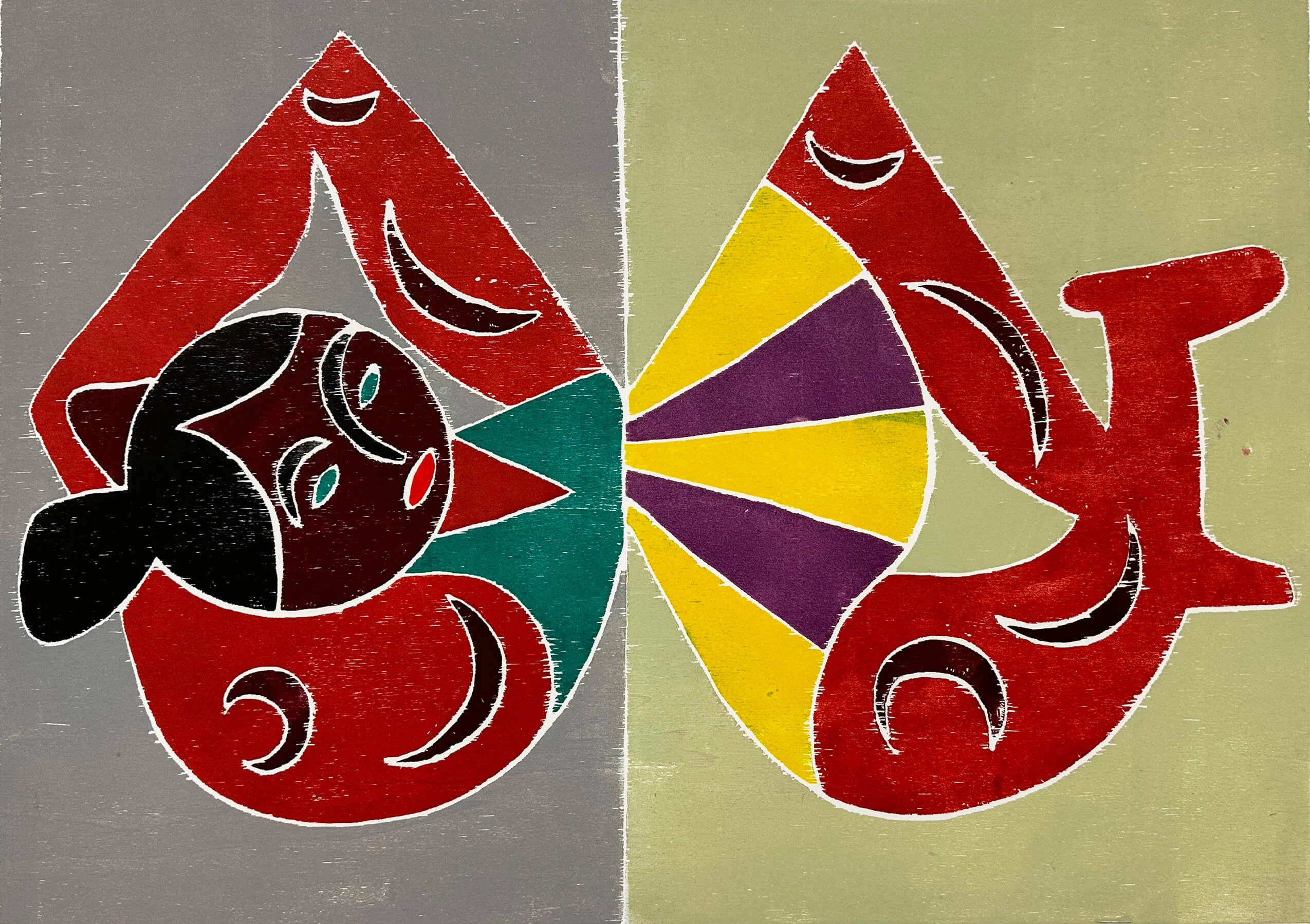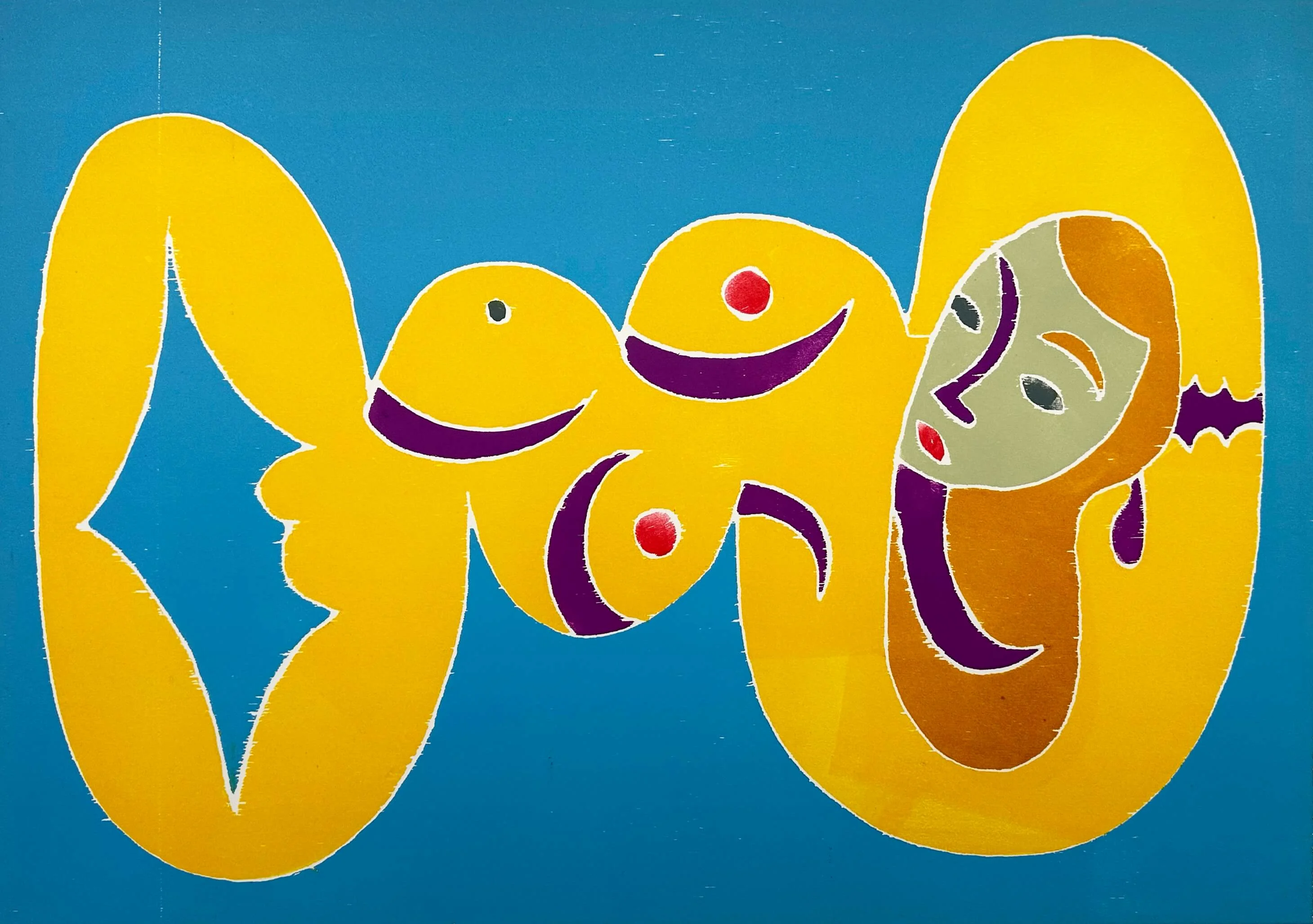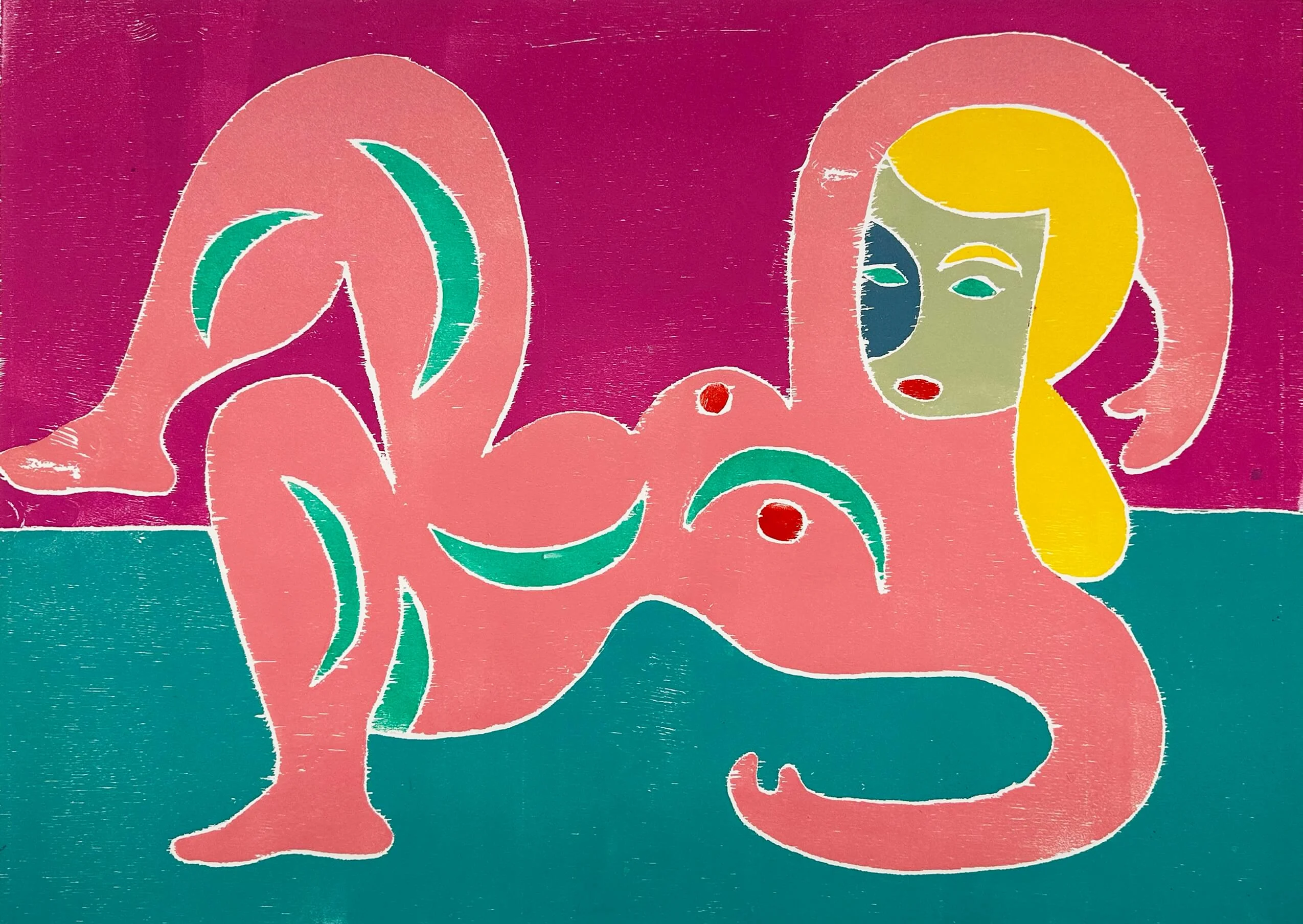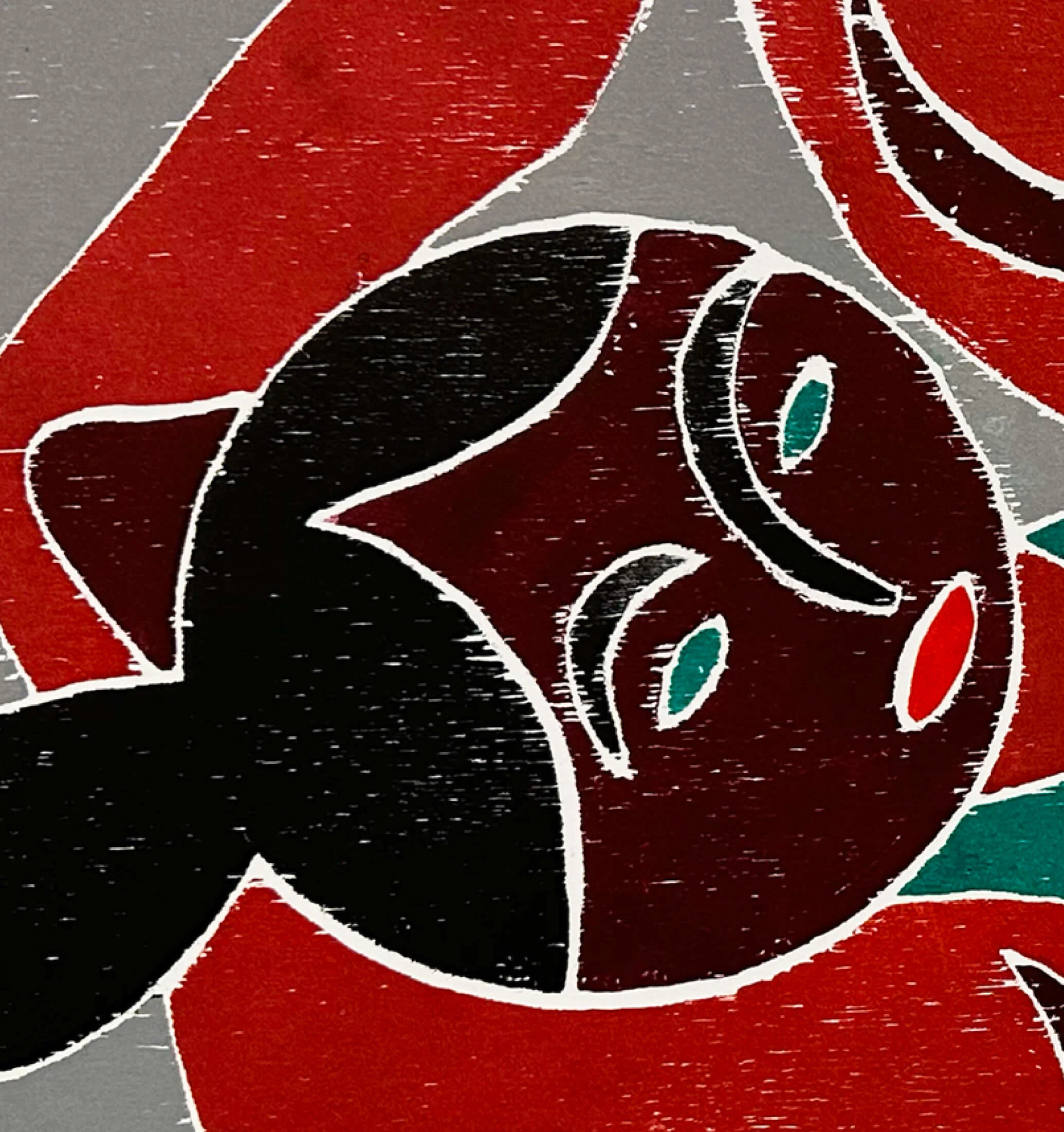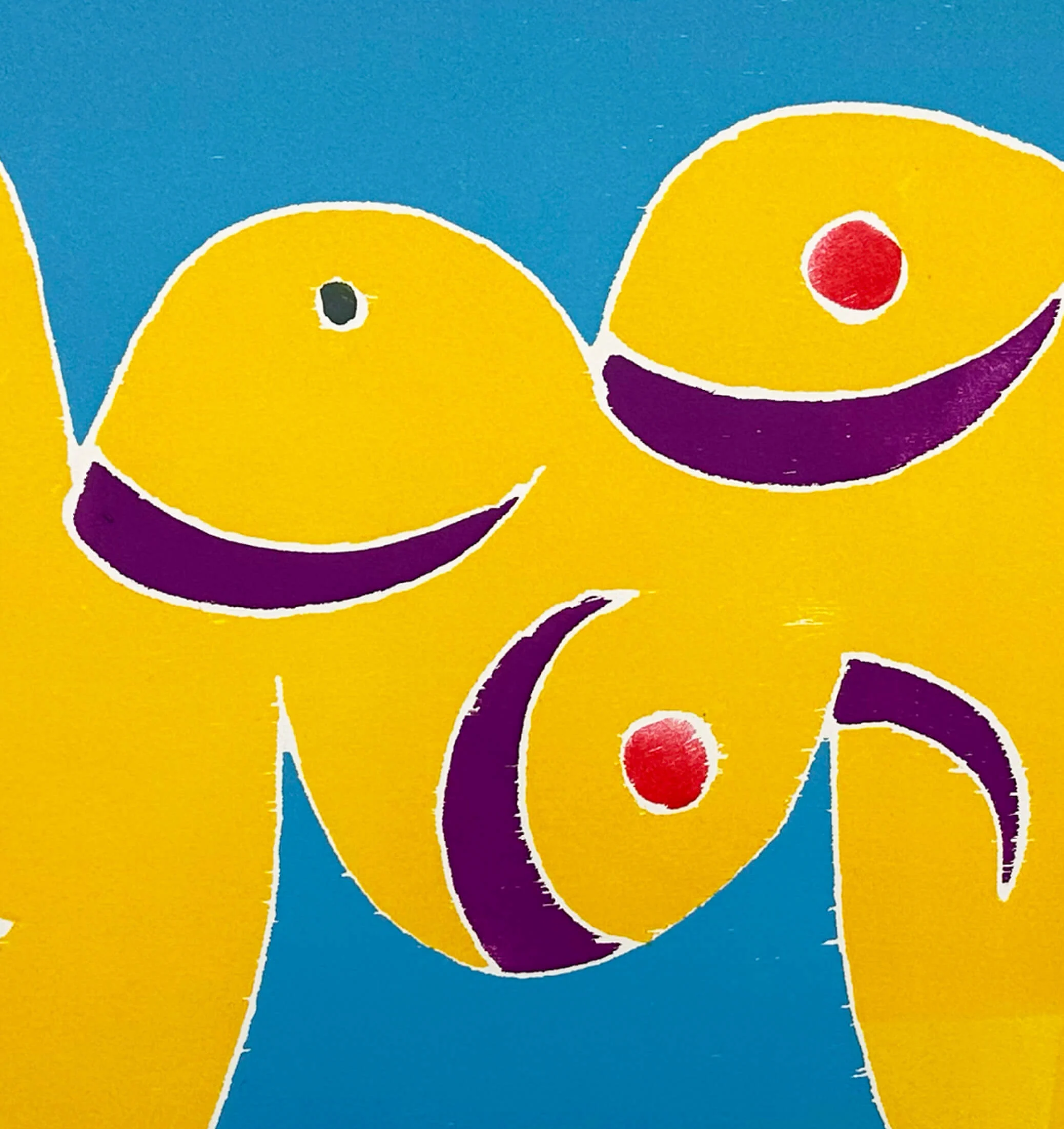
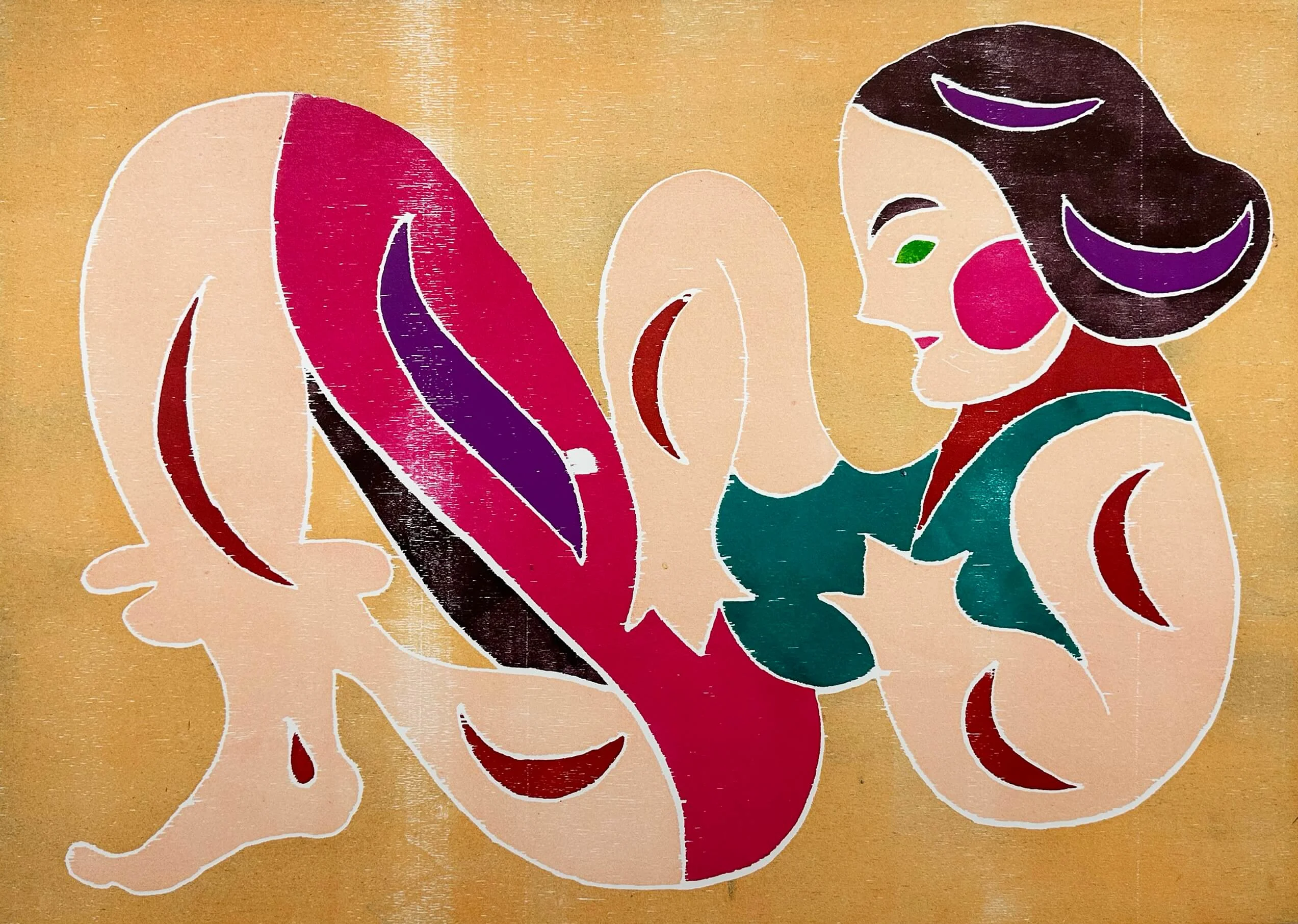
German artist Christoph Ruckhäberle first rose to prominence as part of the cohort of figurative artists known as the New Leipzig School, with his vibrant paintings of intertwining bodies dancing, tussling and resting. Allyssia Alleyne hears how more recently, he’s made printmaking the focal point of his practice, following a rigorous and careful process to create woodcuts of abstract, curvy bodies set against pulsing walls of color.
This is a feature made in collaboration with Platform, a site that offers people the opportunity to easily buy artworks from some of the most exciting contemporary artists in the world. We work with them each month to highlight one of their selected artists.
If you like this work, you can buy an exclusive piece from Platform for a limited period of time. Use discount code WEPRESENT for a $100 discount on any purchase over $1000.
Christoph Ruckhäberle knows how to set a scene. The son of the late Hans-Joachim Ruckhäberle, an acclaimed dramaturg with the Residenz Theatre in Munich, and a former film animation student, the German artist rose to fame in the early 2000s with colorful, large-scale paintings of young people dancing, tussling, or simply in repose, plotted into nature or around the house. There’s the feeling you’re catching a single frame of a story unfolding—though the onus is on the viewer to fill in the blanks.
With his focus on storytelling, he exemplified the spirit of the so-called New Leipzig School, a cohort of figurative painters who graduated from the city’s Academy of Visual Arts after the German reunification. “We treated the picture plane as a stage. You create your stage, and then you put in the elements—the scenery, the figures,” explains Ruckhäberle, who still calls the city home. “For some time, I thought that it would be interesting to find a way to say something about the world in figurative painting through allegory, like in a history painting or [Max] Beckmann’s ‘theater of the world.’ This way, you can bring figures together and then this would say something about relationships or the world.”
But eventually, he continues, “I gave up on this idea of trying to really literally say something. So now it’s more an investigation of bringing things into a picture, treating them like a material, and watching what happens.” That mission has warped the subject matter, giving the work a more abstract, often Cubist quality and dizzying perspectives. The body, often placed against pulsing walls of repeating color, dissolves into patterns and unusual shapes. “Instead of having a stage, I want the image to be one organic thing. The negative space, the figure—it’s all one entity,” Ruckhäberle says.
In reconfiguring his practice, Ruckhäberle has leaned into another skillset: printmaking. As a student at the Academy of Visual Arts, he spent months learning lithograph etching, woodblocking and other printmaking techniques, giving him a greater appreciation for not only the possibilities of the craft, but also its limitations.
“I was always more impressed with someone who makes a print with two or three colors that looks like a 20-color print, than with someone who creates a 50-color silkscreen that looks like it could have been done in four,” he says. “It was only some years after school that I realized that printmaking could be a partner to painting. It’s an important motor for new images because sometimes you're a lot more radical in form and color than you would be with an oil painting, which is seemingly higher in the hierarchy.”
It’s all about the process: taking the rigorous planning required for printmaking—in terms of placement, in terms of line, in terms of color—and transposing it to canvas. Consider a recent series of paintings of curvy, posing figures, set against blocks of color. To get a uniform flatness, Ruckhäberle first masked the background with tape, and filled the empty space that would become the figure with enamel. After they dried, he was able to work in reverse, covering the figure with tape so that he could fill the background without unintended overlap. “If you want to paint the figure, you have to work on the background, and the other way around… It’s not like [traditional] painting where you can just keep on changing things,” he says. “[I was] taking my images from painting and printmaking, and back, and then trying to develop the images through those changes.”
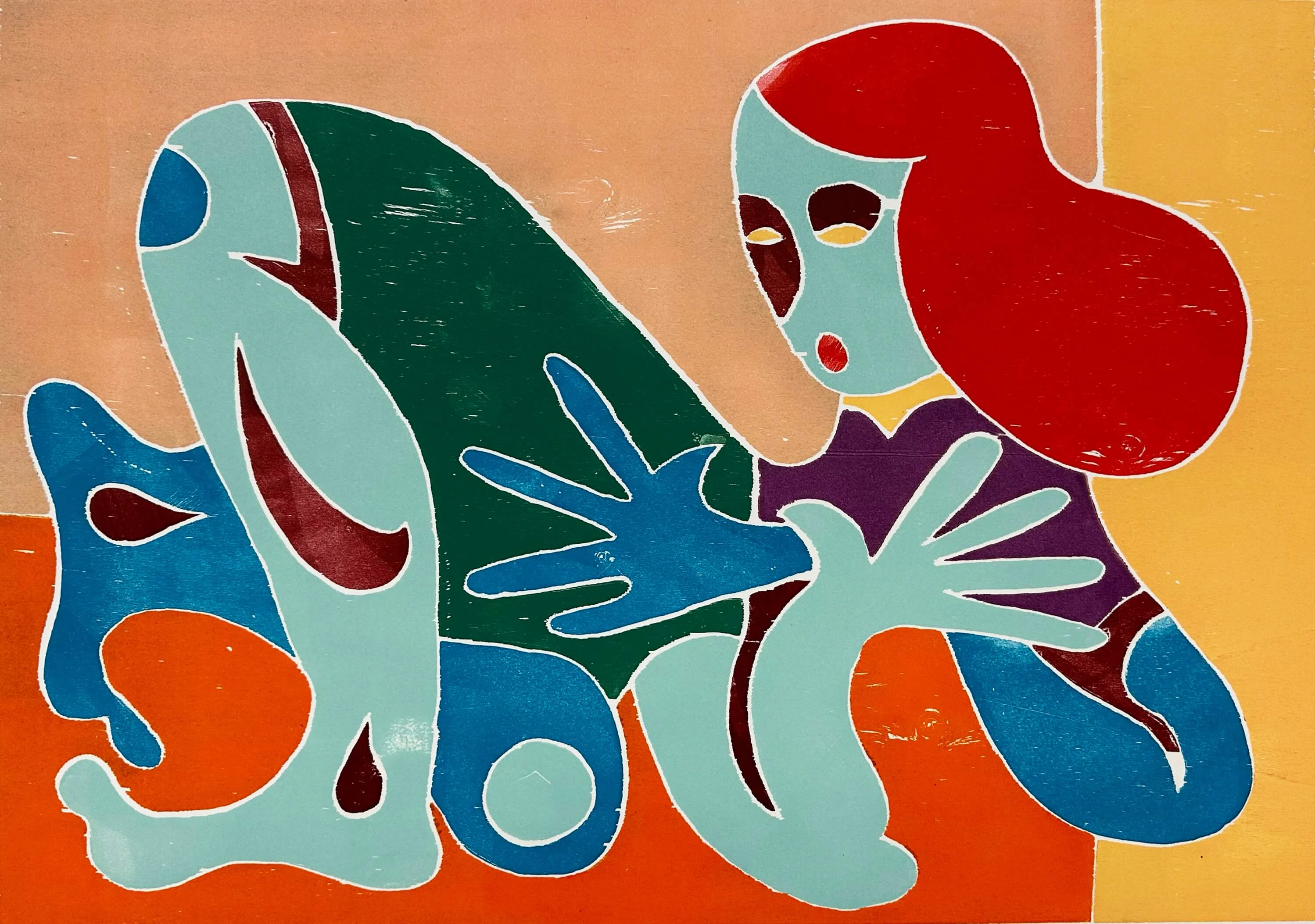
Ruckhäberle has also made printmaking itself an important part of his practice. Beyond creating his own prints, he runs LUBOK Verlag, the publishing house he founded with graphic designer and printer Thomas Siemon, which releases limited-edition artists’ books with original linocuts.
To his eye, there’s something special about the process, and its inherent imperfections. When it comes to the woodblock prints of these enamel paintings, “I am not very good at cutting the wood, so you have little breaks [in the prints], so that the printmaking can be more painterly than the paintings. But you also see the grain of the woods; and since they’re hand-inked, each print is different. I like that very much,” he says. “I know for a lot of artists, printmaking is more something on the side. But for me, it's not reproduction: it’s really the production.”
Platform
This is a feature made in collaboration with Platform, a site that offers people the opportunity to easily buy artworks from some of the most exciting contemporary artists in the world. We work with them each month to highlight one of their selected artists.
If you like this work, you can buy an exclusive piece from Platform for a limited period of time. Use discount code WEPRESENT for a $100 discount on any purchase over $1000.


